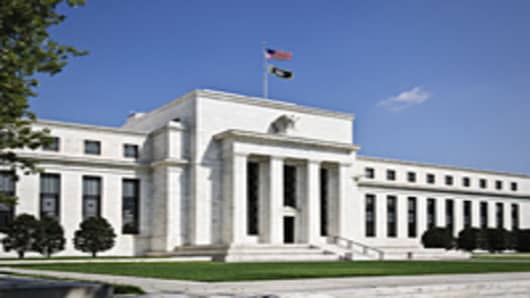Specifically, Citi advocates a three-pronged approach: First, lower interest rates “all the way to zero” in the two regions, the U.K. and euro area, where they aren’t basically at zero already. Second, carry out “more imaginative forms” of quantitative easing of any or all types of “less liquid and higher credit risk securities” beyond government bonds. And third, engage in “helicopter money drops,” by which they mean the fiscal authorities in each region should join forces with the central bank to pump money directly into their respective economies.
It is these latter two — the most controversial of the bunch — which Citi argues will be most effective in boosting growth across these four struggling regions. There are two primary factors, however, holding many policy makers (and much of the public) back.
One is fear of the known — that is, inflation . Today’s troubles couldn’t be more different from the supply-side woes that hurt growth and fueled inflation in the 1970s and ‘80s, but plenty still don’t see it that way (and many who have lived through hyperinflation episodes in the past are understandably fearful of a repeat). There is also a legitimate case to be made that broad deflation would serve developed economies far better than continued inflation; the trouble, however, is that advanced economies are not well-equipped to manage deflation, especially wage deflation, and that deflation in isolation is a far different story than deflation coupled with high debt loads, which is unfortunately the situation advanced economies are stuck in today.
The second is fear of the unknown. Citi is basically calling on policy makers to try anything and everything to boost growth. The trouble is that policy makers aren’t programmed to work like that. Entrepreneurs, maybe. But policy makers, who have to answer to the public, to political opponents, to themselves? They are perhaps the least likely group of people in the world to baldly adopt a “try anything” approach for fear of the many unintended consequences it could have (consequences that will define their legacies, no less). This is why the “muddle through” approach is almost always the default one. Indeed, even the grandest of gestures (think the U.S. “bazooka” stimulus and bailout schemes) are rarely as grand as they are billed at the time.
Knowing this, Citi nevertheless rattles off a series of “try anything” schemes that policy makers could adopt: “abolishing currency completely and moving to E-money on which negative interest rates can be paid as easily as zero or positive rates,” for one. Taxing holdings of bank notes (originally a Depression-era suggestion), for another.
The firm acknowledges that the case for such drastic moves to lower real interest rates is not “quite as strong today, especially in the U.S. and U.K., as it was in the ‘08-’09 period.” Citi also acknowledges that as U.K. inflation has been persistently running higher than the Bank of England’s target, policy rates there perhaps “should actually be higher.” And it admits that while recessions wreak havoc on pension funding capabilities, so too do extended periods of ultra-low long-term interest rates. It adds that policy makers are partly standing in their own way by not being more explicit about the lengths to which they are willing to go to generate growth. And that in some cases, such as financial reform, supply-side issues may be impeding effective monetary stimulus and ultimately growth.
Still, the firm insists the benefits of further drastic action outweigh the costs. Citi cautions that “quantitative easing,” or central bank asset-buying programs, likely have diminishing effects over time, such that “even doubling or tripling the size would not multiply the effects.” It says the U.S. and U.K. should stop buying government bonds as they have been and, taking a cue from Europe, start buying assets that are less liquid “and/or high credit risk.” (One can hardly blame policy makers for fearing those consequences.) To be sure, Citi’s economists say they doubt policy makers will pursue anything remotely this aggressive.
If there is an area where everyone can agree, however, it may be on taxation. Citi says the “helicopter money drop” they advocate can take the form of infrastructure investment, direct government payments to households, or a “temporary tax cut” (emphasis theirs), any of which would be funded by a “permanent increase in the monetary base.” It should be immediately clear which of these options, at least in the U.S., would be most likely. (A tax cut funded by an increase in the money supply, which is a demand-side stimulus program, by the way, should not be confused with a tax cut that shrinks the size of government, even though it would likely be phrased as such to win over the public.)
So why doesn’t the Fed , or any other central bank, simply print money to pay off its national debt? Here, Citi is quick to caution against such extrapolation in its concluding remarks: “Our estimates of the maximum general government deficit for the euro area and the US that can be financed without a surging rate of inflation are around 2% of GDP at most – hardly the stuff of which permanent monetization dreams are made.” Got all that? Good. Time now, perhaps, to contemplate an “E-money” world.
Follow Kelly Evans on Twitter: @kelly_evans


